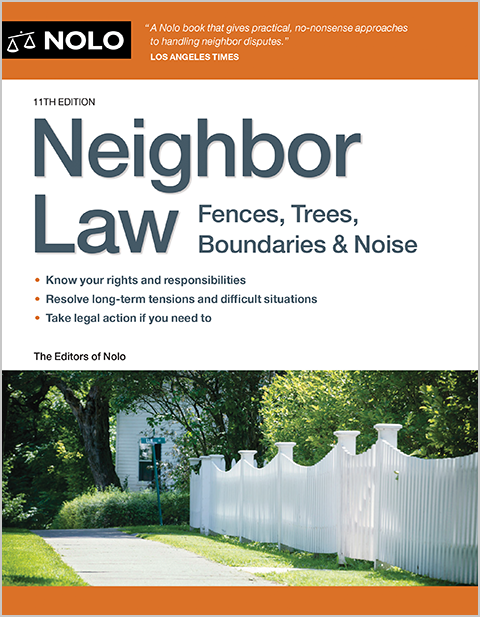Own property in Maryland? Here's how to make sure all of it remains yours.
If you're a property owner in Maryland, you might have two or three neighbors whose land borders yours. Surprising as it might seem, those neighbors could potentially gain legal title to pieces of your property under a legal doctrine called adverse possession. And while less likely, an unknown trespasser could squat on your land and develop the same type of claim to legal ownership.
This doesn't happen overnight. Indeed, it takes 20 continuous years for such a person to establish an ownership claim in Maryland. Nevertheless, to make sure that your land remains yours and that a neighbor can't lay claim to a portion of it, you should familiarize yourself with the Maryland's laws on adverse possession.
There might also be times when you yourself need to assert an adverse possession claim, over land that you feel you've developed a right to use and want to continue using.
Read more about Maryland Laws on Property Disputes Between Neighbors.
How Adverse Possession Laws Work
Adverse possession is a legal concept that allows a trespasser (sometimes a stranger but more often a neighbor) to gain legal title over the land of a property owner. The concept developed in early Britain. More recently, though, its function has been to achieve a just and equitable result when one owner has neglected or forgotten about a piece of land while another has been using or caring for it for so long that to make them leave would create hardship or be unfair.
Adverse possession in Maryland is partially regulated by statute, but mostly by the courts.
Maryland's Requirements for Adverse Possession
What do Maryland courts require a trespasser to prove before claiming property through adverse possession? Adverse possession in Maryland, like in most states, is established from the nature of a trespasser's possession and the length of time he or she possesses the land. A trespasser's possession must be:
- hostile (against the right of the true owner and without permission; it doesn't require actual arguments or bad relations between the parties, however)
- actual (exercising control over the property)
- exclusive (in the possession of the trespasser alone)
- open and notorious (using the property as the real owner would, without hiding the occupancy), and
- continuous (without breaks) for the whole of the statutory period, which is 20 years (under Md. Code, Cts. & Jud. Proc. § 5-103).
For example, imagine that Billy and Jamie live next to one another in Bethesda. There is no dividing fence or boundary between their yards. Billy builds a shed that is actually on Jamie's side of the property, covering about 13 square feet of earth. Jamie doesn't say anything. Billy uses the shed as if it were on his own land. He does this for 21 years. At that point, Billy can probably establish that he "owns" the land on which he was encroaching. Jamie could have stopped Billy by demanding over those 21 years that he remove his shed, or sign a rental agreement indicating that the arrangement was by mutual consent. But Maryland courts will not allow Jamie to kick out Billy after sitting on those rights for over two decades.
Burden of Proof Is on the Trespasser in Maryland
You might have heard the phrase "burden of proof." This refers to which party, in a courtroom, has the tough job of proving or disproving an assertion.
In Maryland, the burden of proving title by adverse possession is on the trespasser who's claiming it. That person must walk into court ready to prove all the elements described above: namely, that their possession was actual, open, exclusive, hostile, and continuous for a period of 20 years.
However, once the trespasser establishes those elements, the burden shifts to the landowner to disprove them. For example, a landowner could offer evidence to show that the trespasser wasn't actually there for a full 20 years (disproving the continuous statutory requirement), or that lots of other people used the land, too (disproving the exclusivity requirement).
No Requirement of Knowledge for Adverse Possession in Maryland
Maryland courts stress that there is no requirement that the entry and continued possession of the property be done knowingly to establish adverse possession.
Rather, any entry and possession for the required 20 years that is exclusive, continuous, hostile, actual and open, even if under a mistaken claim of title, is sufficient to support a claim of title by adverse possession.
So, using our example above, it doesn't matter whether Billy built the shed knowing that he was on Jamie's land, or whether he built it mistakenly thinking it was on his own land. His intent has no bearing on his eventual claim for title under adverse possession.
Talk to a Lawyer
Need a lawyer? Start here.
How it Works
- Briefly tell us about your case
- Provide your contact information
- Choose attorneys to contact you
- Briefly tell us about your case
- Provide your contact information
- Choose attorneys to contact you


